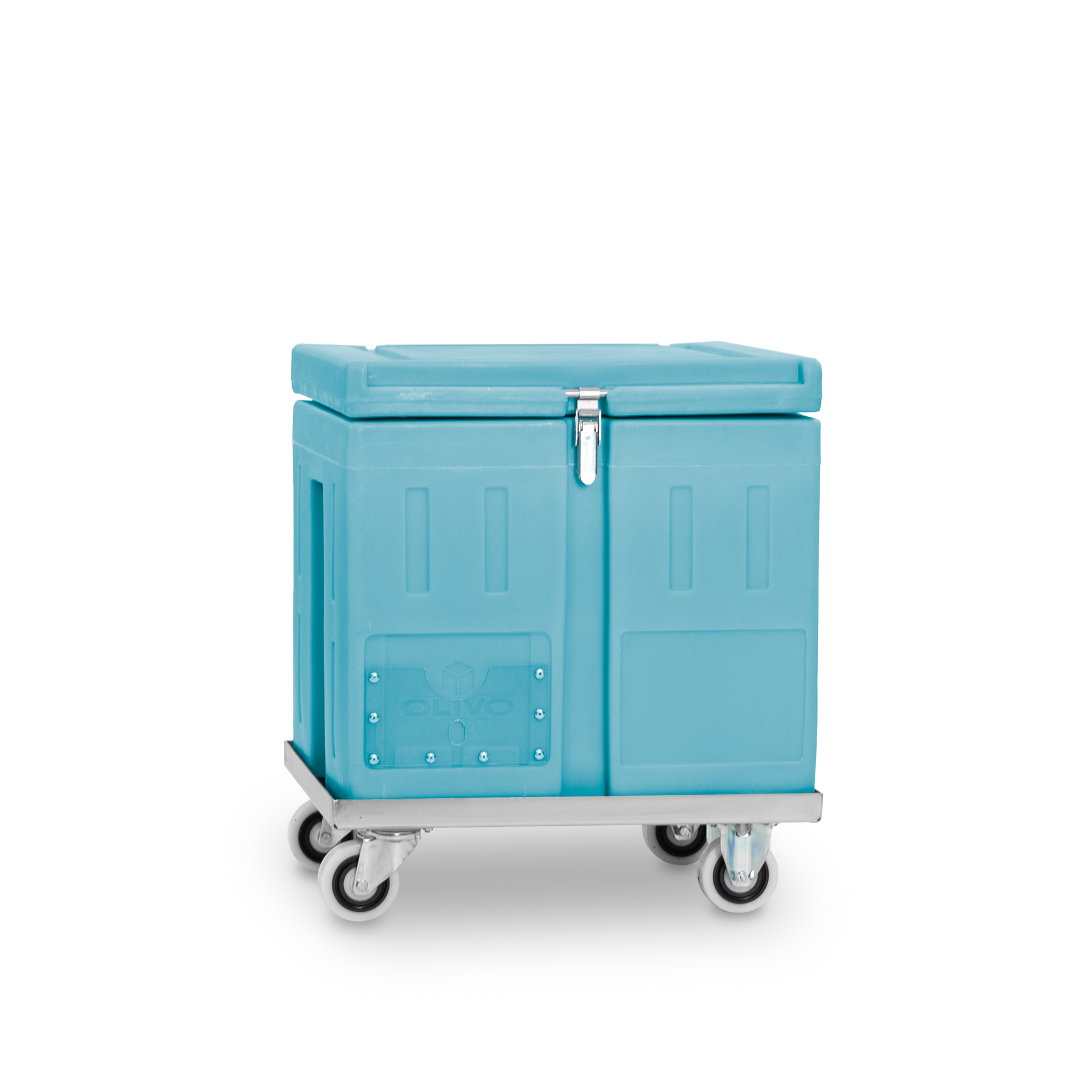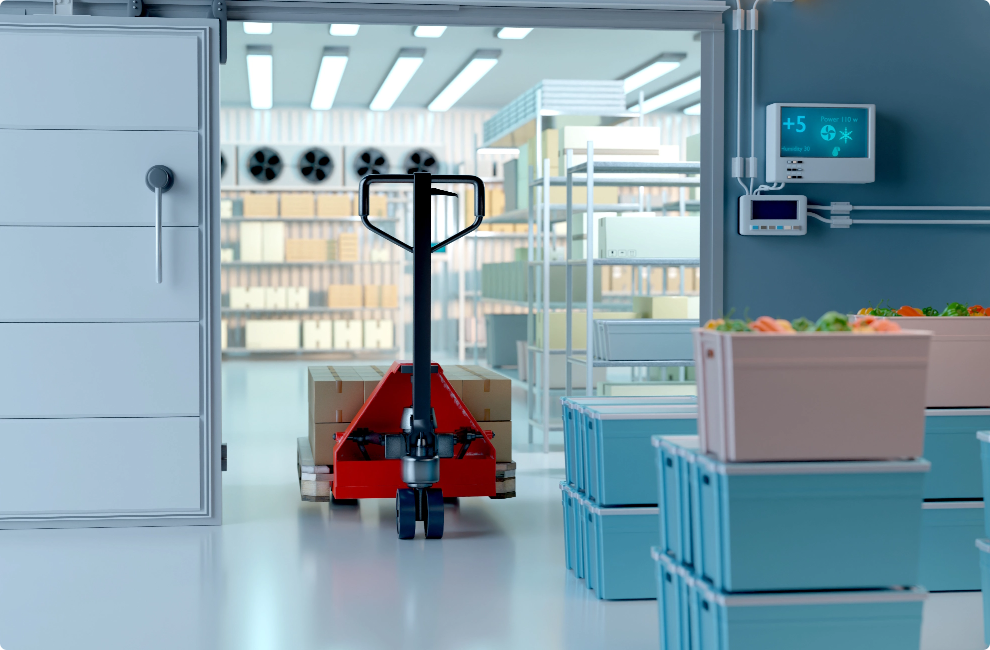- Thermal characterisation of materials: the overall coefficient of heat transfer K.
To characterise the performances of a container, we determine the overall coefficient of heat transfer K. The lower the K-value (or K-factor), the better a thermal insulator the material is.
If K ≤ 0.4 W/m².°C, the thermal insulation performance is suitable for transporting goods at temperatures above and below zero
If 0.4 W/ m².°C ≤ K ≤ 0.7W/ m².°C, the thermal insulation performance is suitable for transporting goods at temperatures above zero only
The K-factor indicates the insulating performance of a container.
It is measured by a specific testing method which takes account of all the materials in the design of the container and the assembly techniques.
Olivo solutions meet all the international requirements, the criteria defined by the WHO, in terms of insulation and temperature maintenance for all types of transport temperature profile.
- Regulations on insulated containers
The insulated equipment used for temperature-controlled transport is subject to the ATP Agreement.
ATP: Agreement on the International Carriage of Perishable Foodstuffs and on the Special Equipment to be Used for such Carriage. This UN agreement came into force in 1970. It was signed by 48 countries and introduced mutual recognition of certificates. In France, the Order of 20 July 1998 transposed the ATP into French law.
In France, the competent authority mandated by the State to issue ATP certificates is Cémafroid.
In the distribution of temperature-sensitive healthcare products, the ATP is a reference certification even though it is not mandatory.
The Good Distribution Practices for medicinal products for human use and pharmaceutical products (Official Bulletin validated by the Order of 30 June 2000) mention the distribution of temperature-sensitive products in general terms and state in particular that “the conditions of storage must be respected at all times, including during transport” and that it is necessary to “protect products subject to particular storage conditions with appropriate packaging and to identify them”.
The regulations relating to the ATP impose an annual monitoring audit on manufacturers as well as traceability and manufacturing process repeatability requirements.
Every Olivo insulated and refrigerating container is characterised and checked at regular intervals by approved laboratories which authorise their use and placing in service.
The use of all our solutions is therefore compatible with the HACCP principles.






